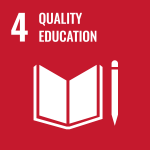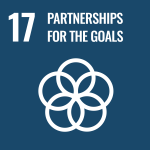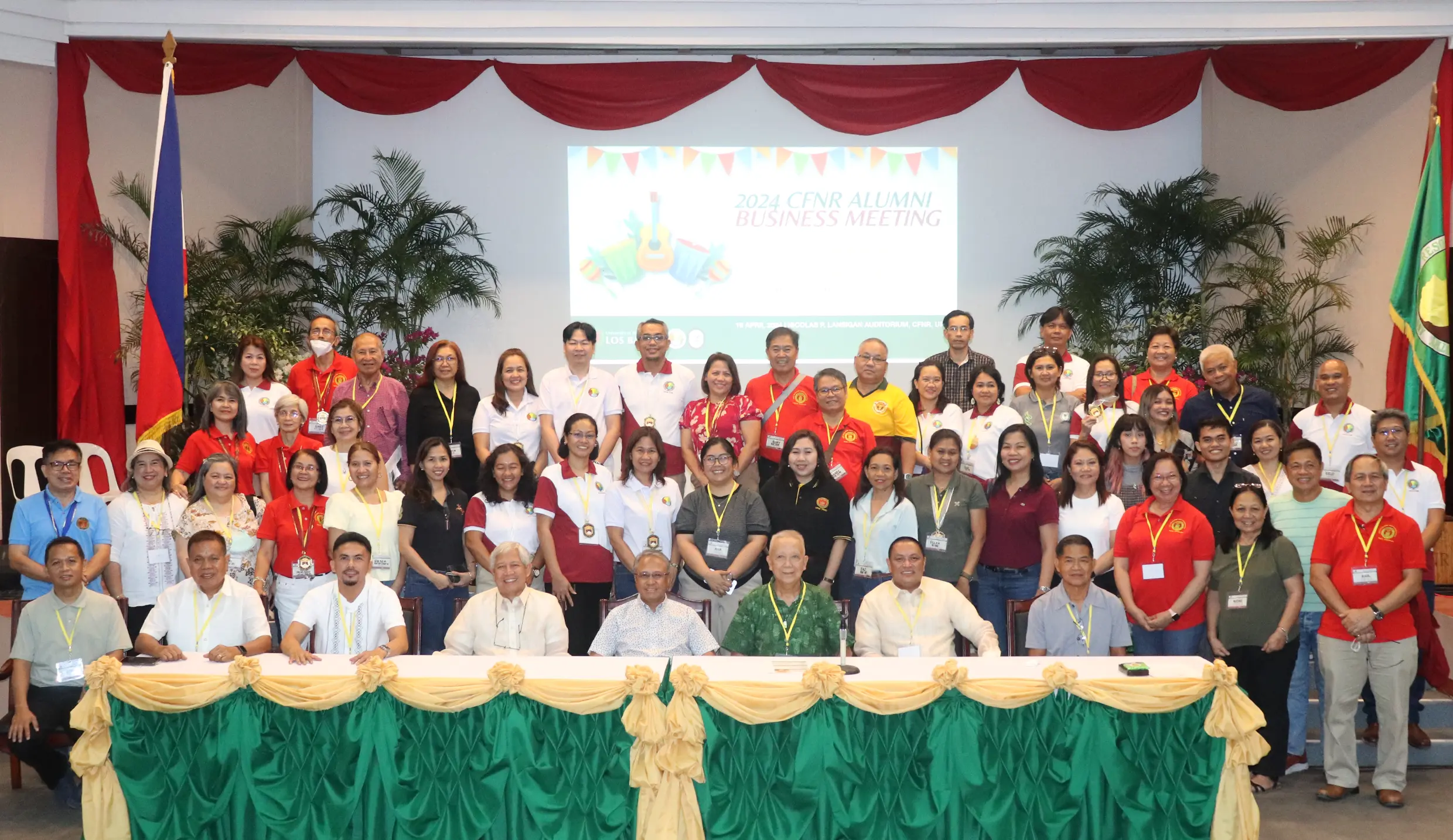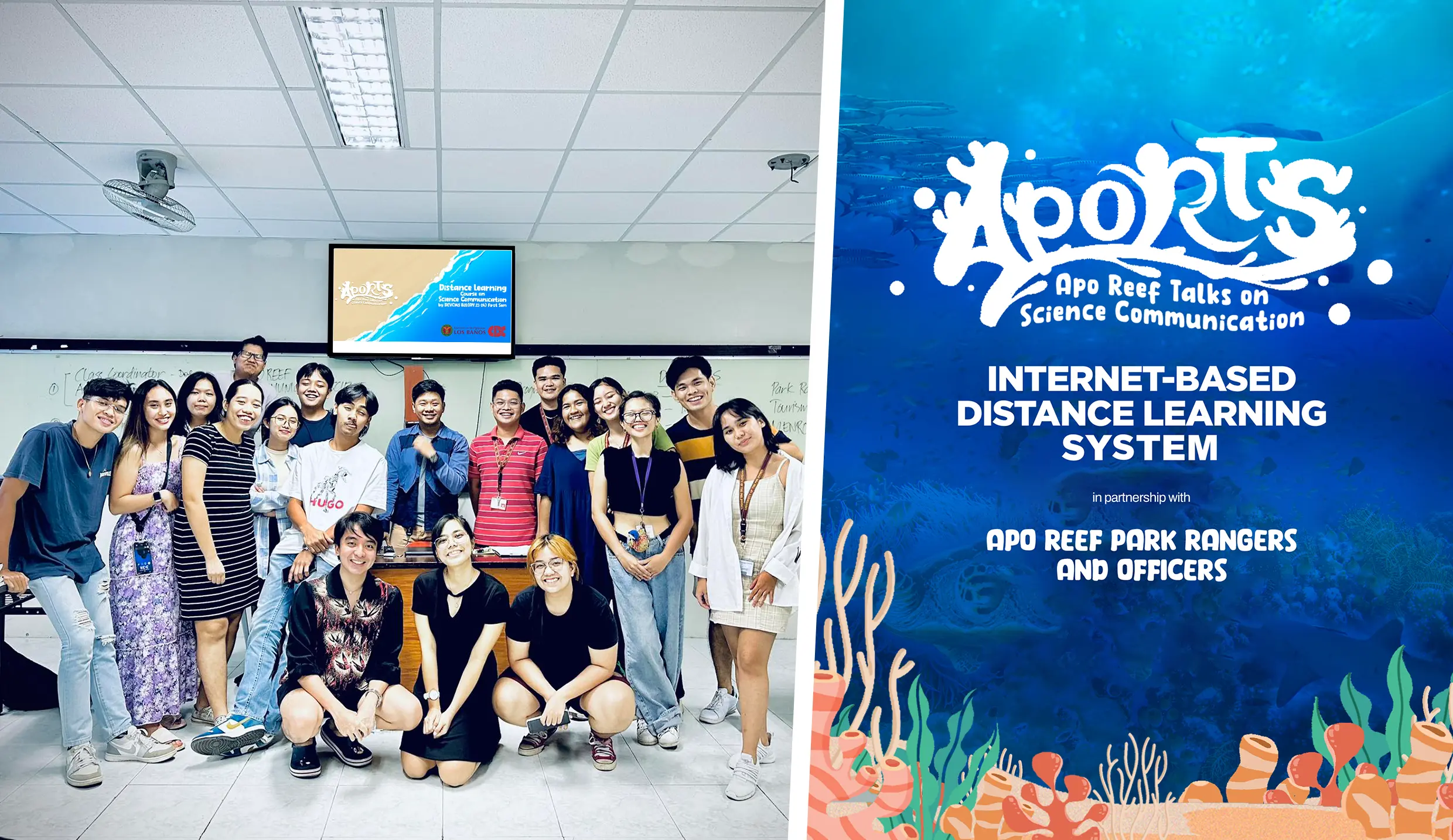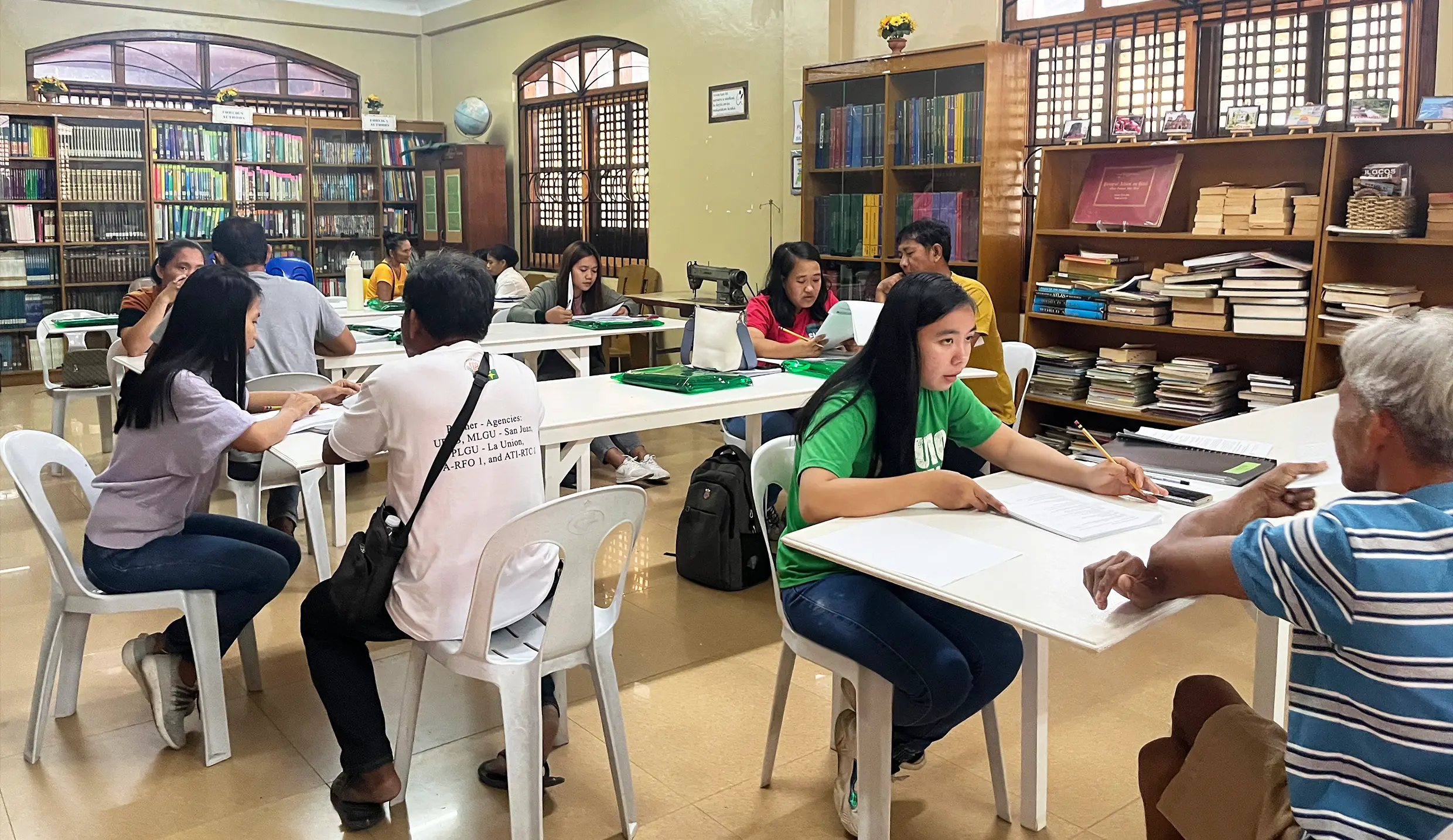
UPLB, through the Learning Resource Center (LRC), reached 186 prospective UPLB students on Siargao Island through the Recruitment Program for the Best and the Brightest (RPBB) on April 22, 2024.
Institutionalized by the LRC, the RPBB is part of UP’s efforts to democratize access to UP education and promote inclusive and equitable quality education in underrepresented communities outside Laguna and Metro Manila.
Two orientation sessions on the UP admission process, UPLB degree programs, scholarship opportunities, and student services were held at Siargao National Science High School in the southern municipality of Dapa and Del Carmen National High School in the western town of Del Carmen.
In his opening remarks, Reiner S. Oraliza, senior education program specialist at the Planning and Research Unit of the Department of Education – Schools Division Office (DepEd-SDO) of Siargao Islands, thanked the RPBB team and participating students, class advisers, and school principals.
“The Department of Education Schools Division of Siargao is delighted to have partnered with our allied academic institutions, such as the University of the Philippines, in making education equitable, inclusive, and accessible. This partnership continues to create opportunities for quality education and for a brighter future for the Siargaonon learners,” he said.
Sheryl Edd P. Hermosa-Ebron, LRC university extension associate and RPBB coordinator, introduced UPLB’s diverse degree programs, scenic campus, and distinguished alumni in the first session entitled “WazzUP!: Why Choose UPLB?.”
Prof. Veneranda A. Magpantay, college secretary of the College of Agriculture and Food Science, began the second session, “Light UP!: Discover a course that fuels your passion and purpose.” She emphasized the importance of agriculture in the sustainable production of nutritious food and the promotion of entrepreneurship for national development.
Dr. Rosalie C. Mendoza, college secretary of the College of Forestry and Natural Resources, encouraged Siargaonon youth to become stewards of the island’s biodiversity. She highlighted how Del Carmen’s mangrove forest acted as a natural barrier against Typhoon Odette, which devastated the island on December 16, 2021.
Prof. Rio John T. Ducusin, chair of the Department of Veterinary Clinical Sciences at the College of Veterinary Medicine (CVM), urged students to consider enrolling in the Asia Pacific’s premier veterinary institution. He stated that CVM graduates become world-class, service-oriented veterinary professionals who support national and global animal welfare and production, thereby protecting public health.
Mary Joy J. Ancheta, teaching associate at the Department of Community and Environmental Resource Planning at the College of Human Ecology, shared about the experiential learning methods and diverse specializations available to BS Human Ecology students.
For the third session, “#UPLBCutie: Know More about UP College Admission Process,” Director Francisco N. De Los Reyes of the UP Office of Admissions informed the students about UP’s eight constituent universities (CUs) and the 179 undergraduate courses they can choose from.
He outlined the UP College Admission Test (UPCAT) process, for which applications for the Academic Year 2025-2026 opened on April 15, 2024. Alternative admission pathways to UP include the Iskolar ng Bayan Act of 2014, the Varsity Athlete Admission System, associate programs, appeals, and transfers from other colleges or universities.
The final session, “Better Together,” featured UPLB scholarships, financial assistance, and other student services. Director Ariel L. Babierra of the UPLB Office of Scholarships and Grants reiterated that UP does not charge tuition fees as required by the Universal Access to Quality Tertiary Education Act.
Once enrolled in UPLB or other CUs, they can apply for grants based solely on their families’ financial status, private or government scholarships based on their academic or athletic performance, student assistantships, or student loans and claims.
Gonzalo H. Amante, Jr., OIC director of LRC, introduced its learning assistance programs and student support services, including the Agricultural and Rural Development Scholarship for intellectually deserving students from rural low-income families pursuing development-oriented courses at UPLB.
During the question and answer session, a student from San Benito National High School in Surigao Del Norte shared that she is considering taking BS Human Ecology as a pre-med course. “May mga kapatid pa po akong nag-aaral at… itong opportunity na ito, gusto kong maging stepping stone para mas may maipagmalaki ako sa kanila,” she said.
Another student shared that one of their reservations about studying at UP is their “current financial status, but I believe that when it comes to education, there should be no what-ifs. Everything is possible as long as you put your heart in it.”
The UPLB team concluded the RPBB in Siargao with a courtesy visit to the DepEd SDO Siargao office, where Oraliza and Dr. Roel T. Diamante, OIC assistant schools division superintendent, warmly welcomed them.
De Los Reyes encouraged DepEd SDO Siargao to promote the UPCAT, which is scheduled for August 10 and 11, 2024, to the 25 secondary schools under its jurisdiction.
LRC began conducting the RPBB in 2015 to enlighten more students about the advantages of studying at UPLB and to increase enrollment, particularly in its three pioneer colleges of agriculture, forestry, and veterinary medicine.
It also shifted to online recruitment at the start of the pandemic in response to requests from schools such as the UP Rural High School and several Philippine Science High School campuses. (Jennina Marie M. Mora)



